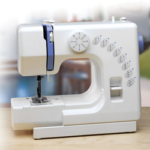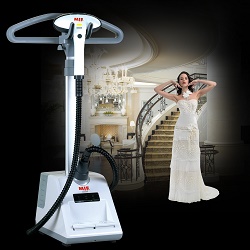Advantages and design features of an electromechanical sewing machine
Modern electromechanical sewing machine is the most popular type of appliance for the repair of clothing and sewing. Such equipment is important for many families. Between themselves, the models differ in the type of shuttle, program modes, power, performance, design features, for example, the presence of an automatic needle threader, panels for sleeves, a knife for trimming threads, etc.
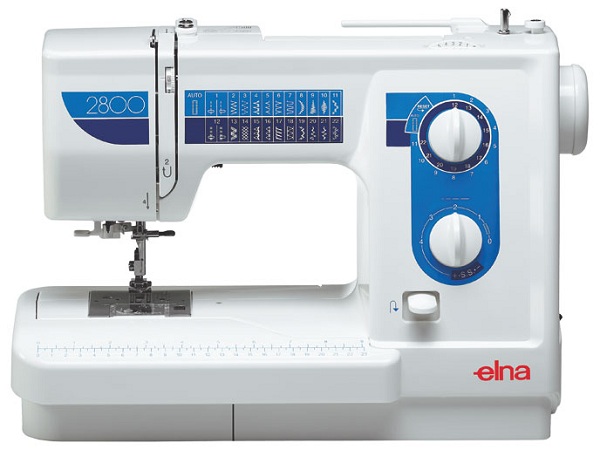
Content
Differences from electronic and computer sewing machines
First of all, an electromechanical sewing machine has mechanical filling. Electric only engine that works after connecting the device to the network from the foot pedal. While the management of premium models is carried out using a microprocessor.
If automatic devices are available a large number of lines, up to 60 in some models, in electromechanical equipment this figure ends by 25, but for home use this is quite enough.
User control of the device is performed using mechanical switches of the programs, stitch width and length, thread tension levers. All tips are listed on the instrument. Electronic and computerized sewing equipment is equipped with digital displays. The control is carried out using the buttons and selecting the required parameters on the monitor.
Despite the obvious technical advantage of computer models, most buyers prefer electromechanical, and for a number of obvious reasons.
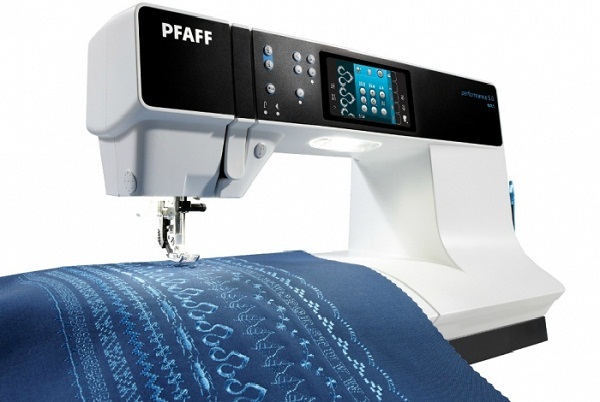
Electronic sewing machine
The main advantages of such devices
Why do consumers choose electromechanical models of sewing machines for home use most often?
- The main reason for choosing such devices - they affordable, unlike more sophisticated computerized devices. At the same time, their functionality is suitable for performing all the necessary home sewing repairs. When properly configured, they can be used to hem curtains, sew jeans and, when using additional accessories, work with knitted materials.
- These are compact and intuitive devices. They are mobile and easy to learn, perfect for beginners.
- Allow you to perform not only the basic, but also some decorative stitches. Thanks to this, the user can easily perform a variety of sewing operations.
- Due to their small size, they can be stored in a closet. If you plan to use such equipment often, then its aesthetic and modern appearance will fit into any interior.
- Various specifications - everyone can choose a model for themselves.
Type of shuttle
The main difference of all electromechanical models is the type of the shuttle: it can be vertical or horizontal. Each has its own distinctive features.
Vertical shuttle It is irreplaceable when working with thick fabrics, but it will take more time to replace the spool in such a device. It needs constant lubrication. Adjusting the thread tension is much easier - it is regulated by a screw that is located on the shuttle itself. And in the horizontal version for such manipulations it is necessary to remove the needle plate. Sewing machines with a vertical hook work louder, in the case of tangling the lower thread, as users say, it is more difficult to untangle it. The brightest representatives with this type of shuttle are Brother models.

Horizontal shuttle Used on most modern sewing machines, not only electromechanical, but also electronic. It clearly shows the bobbin, which helps to control the end of the thread. Such a shuttle does not need constant lubrication, is easy to refuel, and is quieter. An elementary and therefore robust construction that, if necessary, is easily repaired. Household sewing machines with a shuttle of horizontal type are produced by Janome, Jaguar, Singer.

Types of lines and their choice
As mentioned earlier, this type of sewing equipment has a limited set of programs, but it is quite enough for home use. In addition to straight stitches with different stitch lengths, zigzag options are also available. In conjunction with a special foot, zigzag can be used to simulate overlock stitching seam. In the more expensive models there are several decorative lines.
The mode is selected by a rotary mechanical switch. The type of the line is most often graphically depicted on the device case, so there will be no problems with its choice.
Simple models allow you to select only the type of stitch, the selected mode sets the parameters of the stitch length and width immediately. The management of middle and advanced machines provides the user with the opportunity adjusting stitch length and width in line.
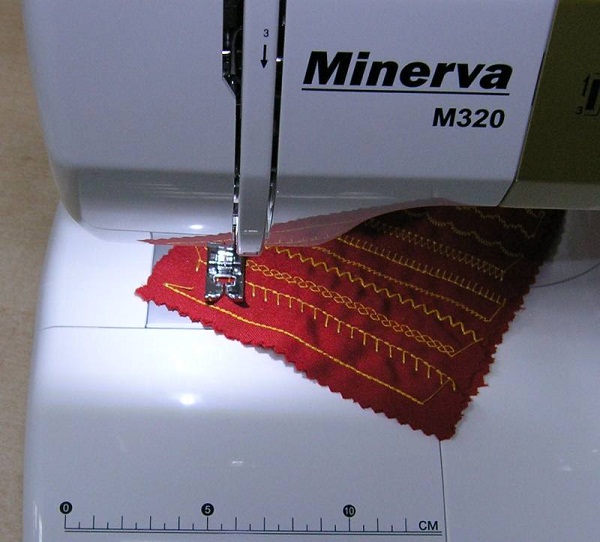
Types of lines on the sewing machine Minerva M320
Necessary additions
There are still some features that are available to users of electromechanical type machines. This is the presence of a panel for the sleeves, the possibility of lowering the teeth of the conveyor, making out loops.
Sleeve panel
The main purpose of this panel is cylindrical processing. To use this option, the user simply needs to remove part of the working platform. It is worth noting that the removable part can be used to store accessories and other small sewing accessories.Using the “free sleeve” function, you can easily hem trousers or jeans, stitch the sleeves, narrow neck, or repair certain pieces of clothing without stripping them.
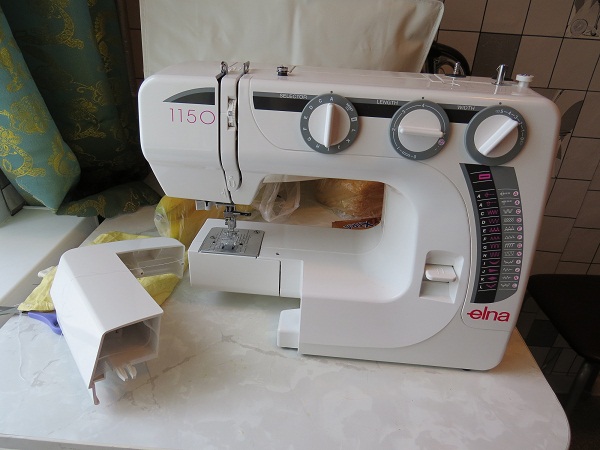
Lower conveyor
The lever of the lower conveyor, which is located in the area of the needle holder, allows the teeth feeding the material under the presser to be lowered into the machine. This function is useful in the case of decorative lines, or darn holes on clothes. Not all models are equipped with a lever, a protective plate is included with some. It is mounted on the teeth, which allows you to freely move the fabric under the foot.
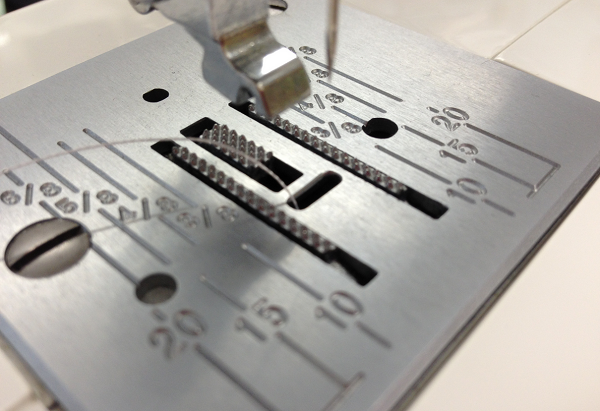
Overcast loop
By the type of overcasting loops, electromechanical sewing machines are divided into semi-automatic and automatic. In the first case, the overlaying is performed in several stages: the seamstress will have to switch programs and turn over the part manually. In automatic machines, overlaying is carried out in one stage, without user intervention. Thanks to this, the loops are the same, regardless of the experience and skills of the seamstress.
For automatic overcasting requires a special foot.
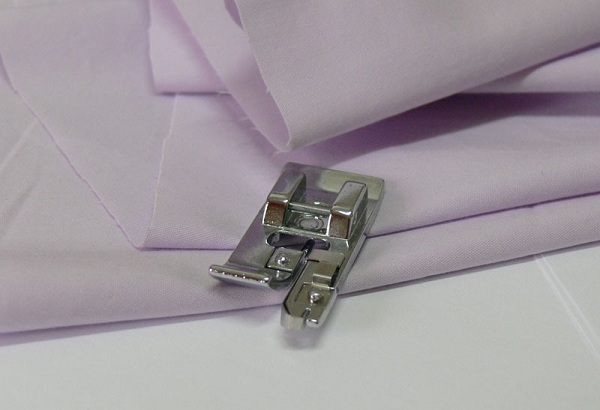
Complete set of the sewing machine and additional accessories
As a rule, basic configuration There is a set of spare needles, 2-3 extra legs for certain lines, several bobbins, a small screwdriver and maybe engine oil. Depending on the model, an additional case for the device (soft or hard plastic) may be included.
In order to make the most of all the possibilities of the purchased sewing machine, it is better to immediately select a set of legs for it (for different stitches, an overstitch, for secret zipper sewing, for decorative stitches, etc.) and a set of needles of different numbers. In order not to rewind the threads on the bobbin each time, it is also better to supplement their basic quantity.
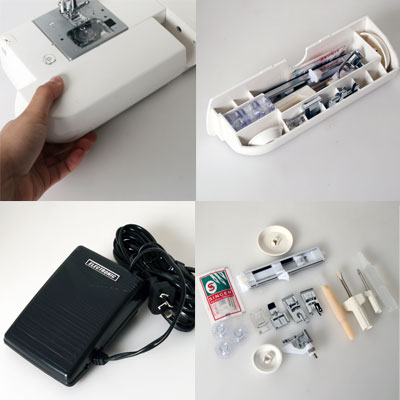
Electromechanical sewing machines combine the low price and all the basic features that such equipment should possess. Such devices are ideal not only for professional craftswomen, but also for novice users. Their work is based on an electric drive. Adjustment is done using manual mechanical levers and switches.

/rating_off.png)






